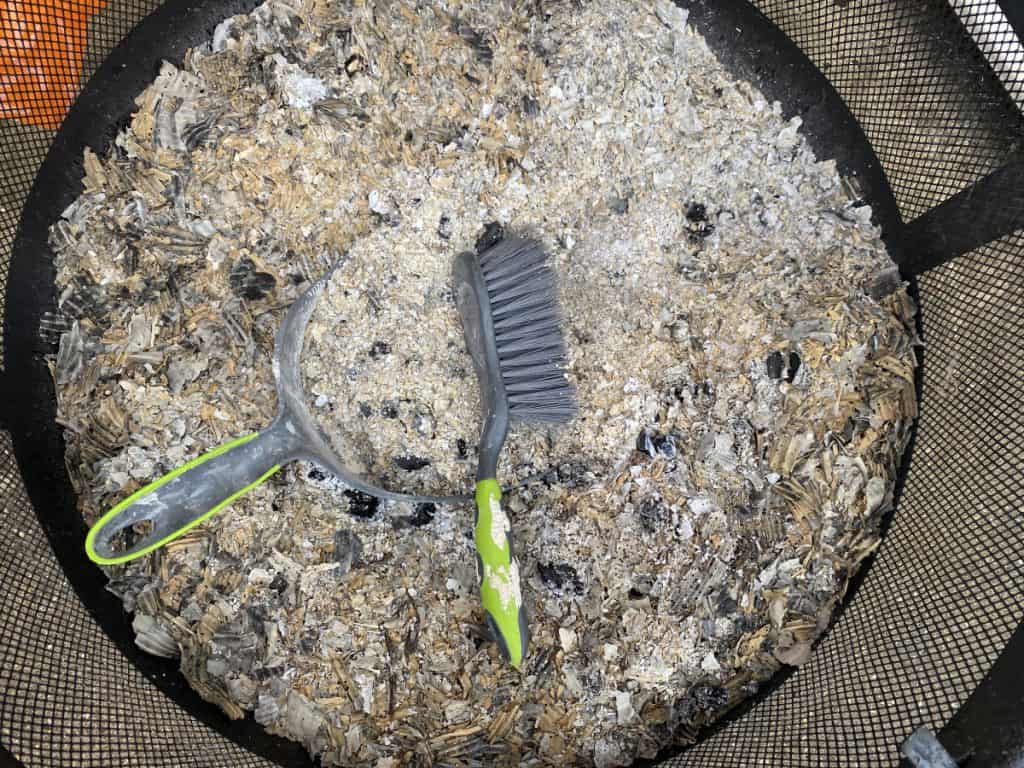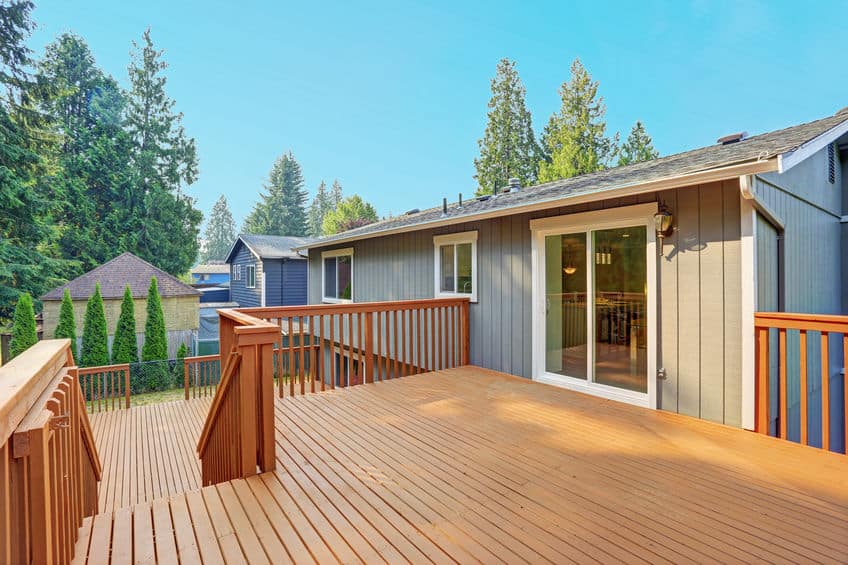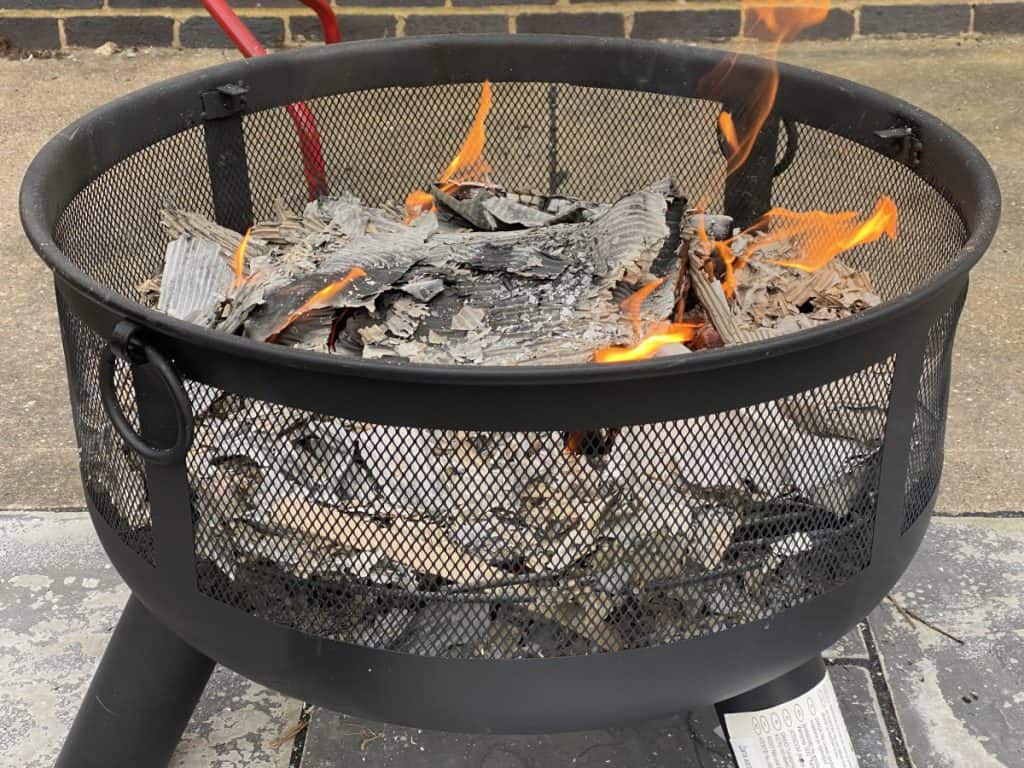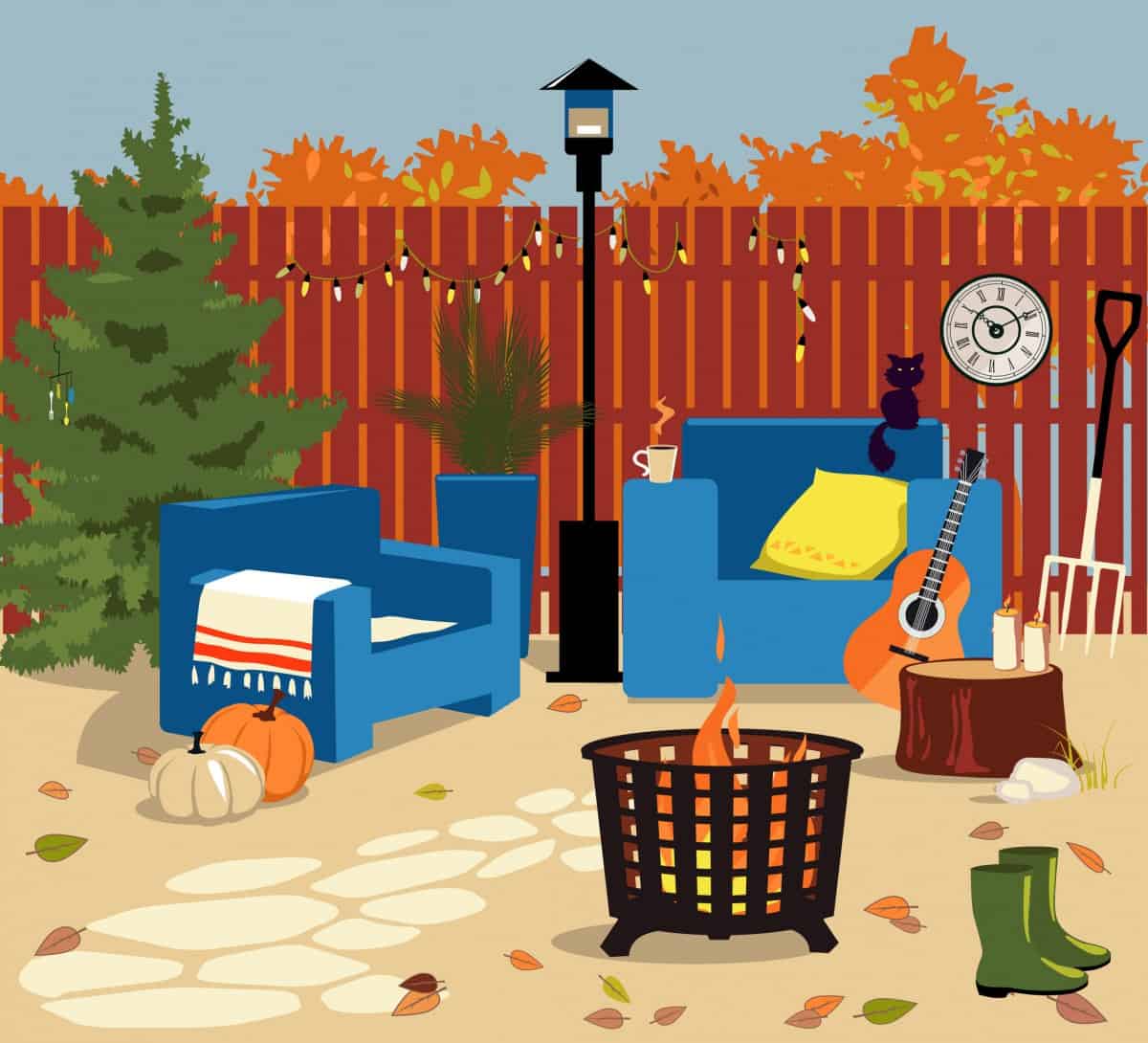Fire Pits and Wood Porches: Are They a Match?
Summer is almost here! From BBQ bashes to star gazing extravaganzas, with summer comes plenty of outdoor fun, often enjoyed by the cheery light and toasty comfort of a fire pit.
A summertime favorite, the fire pit holds a special place in many a summer lover’s hearts. Roasting smores and staying warm on cool summer nights are just a few benefits that come with owning a fire pit.
But many fire pit owners find themselves wondering where the best place to put the fire pit might be. Thanks to their portability, fire pits fit just about anywhere, but that does not mean they should be put just anywhere.
Homes with wood porches should beware of putting a fire pit directly on their wood deck without proper preparation and care.
By no means are fire pits never to be on a wood porch, but there are key steps fire pit owners need to take to have a safe, enjoyable experience around the fire.
Risks of Using a Fire Pit On a Wooden Porch

Wood and fire are not exactly best friends. Plenty of homes experience damage from an ill-kept, poorly located fire pit.
Fire pits, like any source of fire, pose a serious threat to any nearby structures and their occupants when in use.
Structural Damages
Most people know that fire pits pose a risk to the area around them. Between sparks, ash, smoke, and flames, fire pits provide ample danger to wood, metal, and composite structures.
Keep in mind that fire pits can reach up to 1,200 degrees Fahrenheit, hotter than the average oven.
Their ability to generate heat makes them useful for roasting hot dogs and smores, but also adds to their ability to harm structures around them.

Fire pits generate enough heat to destroy wood decking, melt plastic furniture, and damage thin metal frames of decorations and lawn furniture.
If left unchecked, fire pits easily become a source of live flame capable of burning down a home.
Cosmetic Damages

Cosmetic damages to the home and surrounding structures are more common with fire pit use than actual structural destruction.
The extreme temperatures produced by fire pits are capable of quickly melting any nearby decorations or superficial decorations on a porch.
The ash and smoke from a fire pit may stain, fade, or otherwise deteriorate any fabrics, paint, or other materials nearby.
Personal Injury
Injuries are quite common with fire pit use. The heat produced by fire pits easily produces third-degree burns that require immediate medical attention.
The smoke and ash produced by the fire are damaging when inhaled or when they get into the eyes.
In general, you should always regard fire pits as a danger to the health of the user and the integrity of the home.
Preventative Steps to Protect the Porch
So now that you know the risks of using a fire pit, what can you do to prevent any problems and still enjoy using it?
Set-Up and Location
NEVER put a fire pit directly on the wooden porch or within 10 feet of any flammable structures. Some fire pits may have different specifications for nearness to living structures. However, the farther a fire pit is from a house, the less risk it poses to the home.
Use a fire pit pad. Think of a fire pit pad as a specially designed mat used to protect the deck. Stone, metal, and other fire retardant materials create a safe place to put the fire pit without risk to the deck. Found here.

Check city and HOA ordinances before using the fire pit. Some cities and Home Owner’s Associations restrict the size and use of fire pits. Failure to abide by the rules may result in a fine or ticket.
Follow deck instructions. Every type of deck material comes with manufacturer guidance and warnings for use. Refer to these instructions to make sure your deck or porch setup is appropriate for fire pit use.
Remember to check the weight restrictions of a porch. Not all porches can handle hosting parties and fireside chats on them. Fire pits come in a large array of sizes and weights, so bear in mind the weight load the porch can carry when purchasing one.
Follow fire pit instructions. Every commercially produced fire pit comes with instructions for use. Some may have clear instructions as to range and location specifications for use near homes. Do not ignore them.
Place the fire pit on a level area. If the porch has uneven or bowing sections of wood on the porch, do not place the fire pit on it. Tilted fire pits are more likely to move when in use and create a major fire hazard.
Use a fire pit spark screen. Using a fire pit grill or metal cover while in use protects the users from accidentally touching or getting too close to the fire. Additionally, fire pits should remain covered when not in use.
Smart Practices for Use

Never leave a fire pit unattended. The moment a fire burns unattended, its risk-level increases exponentially. Stray wind, an errant wag of a dog’s tail, or an explorative child may all lead to a dangerous situation with the unattended fire pit.
Keep furniture, material, and other objects away from the fire pit. Install any fire pits at least three feet away on all sides from all furniture or other flammable materials with at least six feet of air clearance above it.
Use the right amount and type of fuel. Plenty of folks like to use firestarter liquid or other easy methods to light their fire pit quickly, but beware of using too much! Excessive fuel sources quickly become easy fodder for an uncontained fire.
Keep an emergency fire kit nearby the fire pit. Every home should have a fire extinguisher for inside use, but homes with fire pits should have a second fire extinguisher near the fire pit. Additionally, always keep a large bucket of water on standby when using the fire pit.
Always kill the fire completely before leaving the fire pit. All it takes to start a house fire is a stray spark. Unless a fire has been doused completely with water and shows no sparking or heat at all, it remains a threat to the surrounding structures.
Fire Pit Variables to Consider
When selecting a fire pit, bear in mind that the size of the pit will determine where and how it can be safely used on a porch.
Height
The height of the fire pit does play a role in its ideal location. Taller fire pits still require at least six feet of clearance above them to prevent any stray sparks from lighting hanging structures or materials on fire. Taller fire pits are better suited for use on the ground.
Circumference
Wider fire pits may be better for hosting larger parties, but they do require more room to install and use safely. Unless you have a giant porch, it’s best to use a fire pit no larger than four feet in circumference.
Finding The Right Size for Your Porch
When choosing a fire pit, you will need to know the size of your porch first.
Measure the surface area of the porch first, and then select a location that falls within the safe range of at least fifteen feet from the living structure.
After selecting the location, measure the space given and compare it to the fire pit sizes you are considering. Remember that whatever size you select will need at least three feet of space between it and any furniture, railing, or other materials on all sides.
Most portable, porch-friendly fire pits have a circumference between two feet or three feet wide and stand no taller than a foot off the ground or porch.
Porch-Friendly Fire Pits
Now that you know the risks and best practices for using a fire pit on the porch, you are probably wondering what type of fire pit to get. There are a ton of options that suit every budget and style while still being safe for porch use.
Wood and Coal Fire Pits
Wood and coal fire pits are fairly interchangeable, though it’s important to check the manufacturer’s instructions to see if both fuels are safe for the individual fire pit. They typically come in both square and round shapes and a variety of sizes to suit most needs.
Pros
Wood and coal fire pits are typically cheaper than gas alternatives. They are also easier to install, and the fuel (wood and coal) is easy to come by and generally inexpensive.
Cons
Wood and coal fire pits produce smoke and ash, both of which are less aesthetically pleasing than clean-burning gas, and require frequent clean-up after use. They are also harder to light than gas pits and require frequently fueling, plus a place to keep the wood or coal.
Gas Fire Pits
Gas fire pits are newer models than wood or coal. They are the eco-friendly alternative to the fossil-fuel-fed wood and coal models, too. They typically come in both square and round shapes and a variety of sizes to suit most needs.
Pros
Gas fire pits are cleaning burning, meaning they do not produce irritating ash or smoke. They are quick and easy to light and require little maintenance to keep the fire burning.
Cons
The fuel source of gas fire pits (propane) requires a gas line connection to the fire pit. The lines reduce the portability of the fire pit and pose a risk to the health of users and the integrity of the home if accidentally disconnected.
Let these details and tips guide you as you begin the search for the perfect fire pit for your porch!
Alright guys, that’s it for this article, if you are interesting in reading more about fire pits and garden heating, we have lots of cool articles related such as:
Can Patio Heaters be Used on a Screened-in Porch? (Quick Facts)

